WFGA at BBC Gardener's World Live 2025
The theme of the Beautiful Borders this year is Cultivating Connections. That is exactly what Working for Gardeners is about. We build links between gardens and trainees and from that we grow new gardeners.
The event takes place at the NEC Birmingham from 12th to 15th June 2025. The WFGA will also have a stand there amongst the borders where you can come and talk to us about how you get involved, as a trainee, as a garden owner or as a donor.
In the meanwhile, meet some of our WRAGS Trainees building their futures, one border at a time.
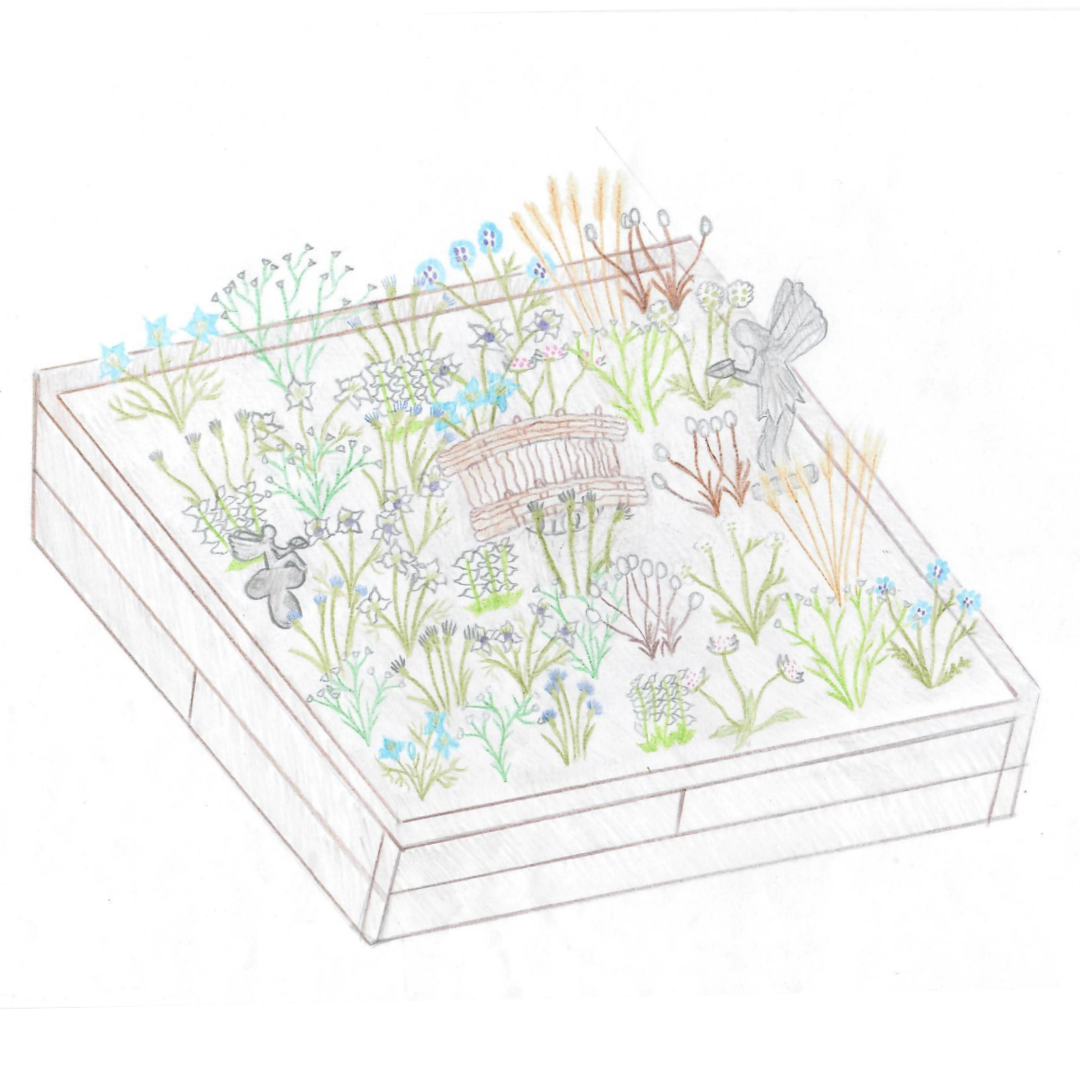
Donna Sutton - From Mother to Maiden
A border can be a place to express yourself, a place that sparks memories and inspiration.
This border represents my transition from maiden to mother, and how the connections I have cultivated along the way have carved the path for me to pursue
my career in horticulture when my priorities changed once I became a mother. The annual plants represent my maiden phase where life could be fleeting and fast
paced. Then it transitions across the bridge that represents becoming a mother and then into the perennial plants which represent the forever phases in my life.
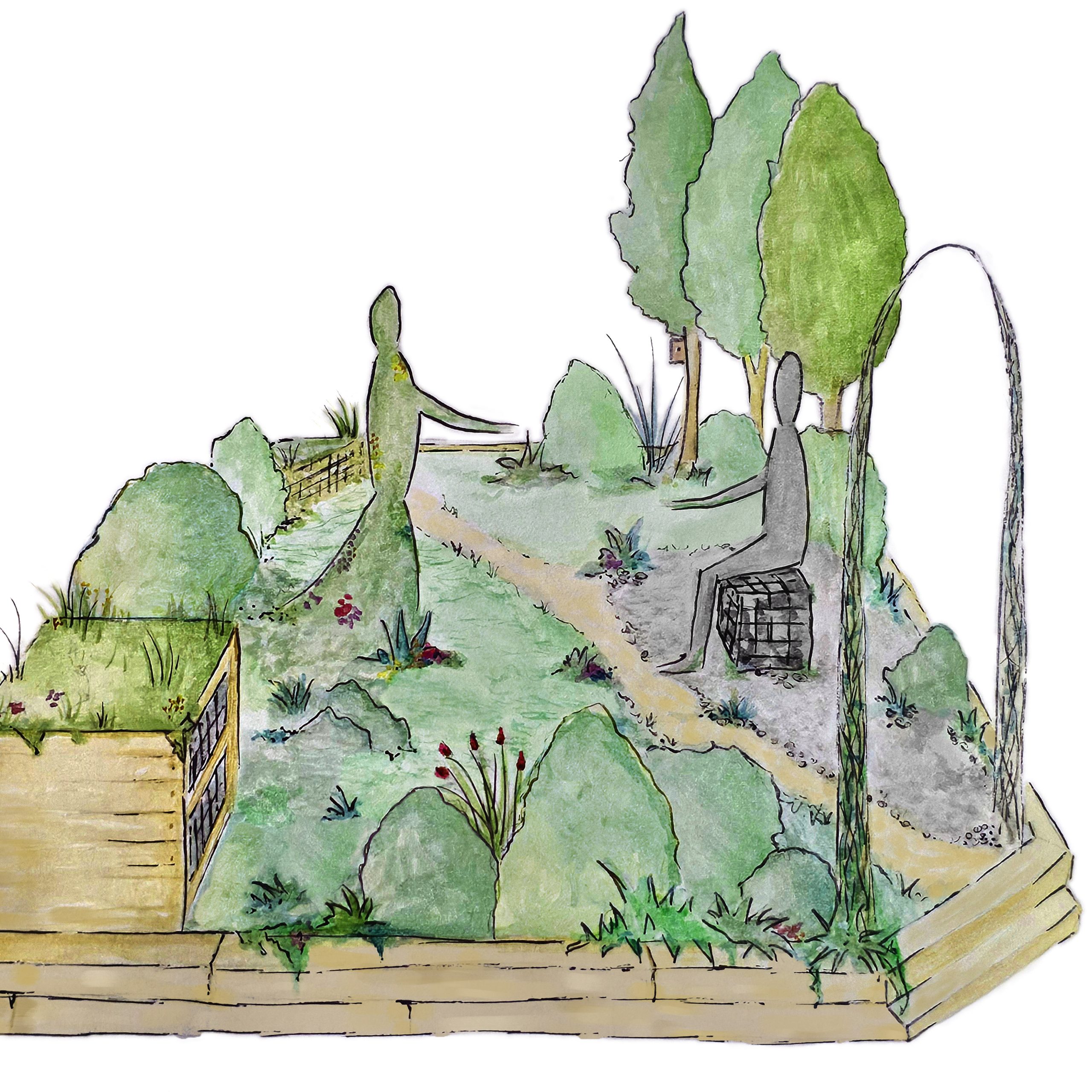
Hannah Becket - Nature’s Resilience
This garden celebrates nature’s resilience and the power of collaboration. An arch connects a once-barren wasteland to lush, predominantly pollinator-friendly planting—one side crafted with a local blacksmith, the other woven from living willow.
Above ground, plants rejuvenate the land. Below, the mycorrhizal network links trees and plants, sharing resources—just as human communities flourish through mutual support.
Two central figures reach toward each other, symbolizing this exchange. The planted sculpture hides an insect home within her dress, protecting a vital resource key to natures survival. Created from recycled materials, the garden inspires reflection on cultivating connections—within nature, the earth, and our communities. By nurturing these bonds and by making more conscious planting decisions, we create a thriving and sustainable future.
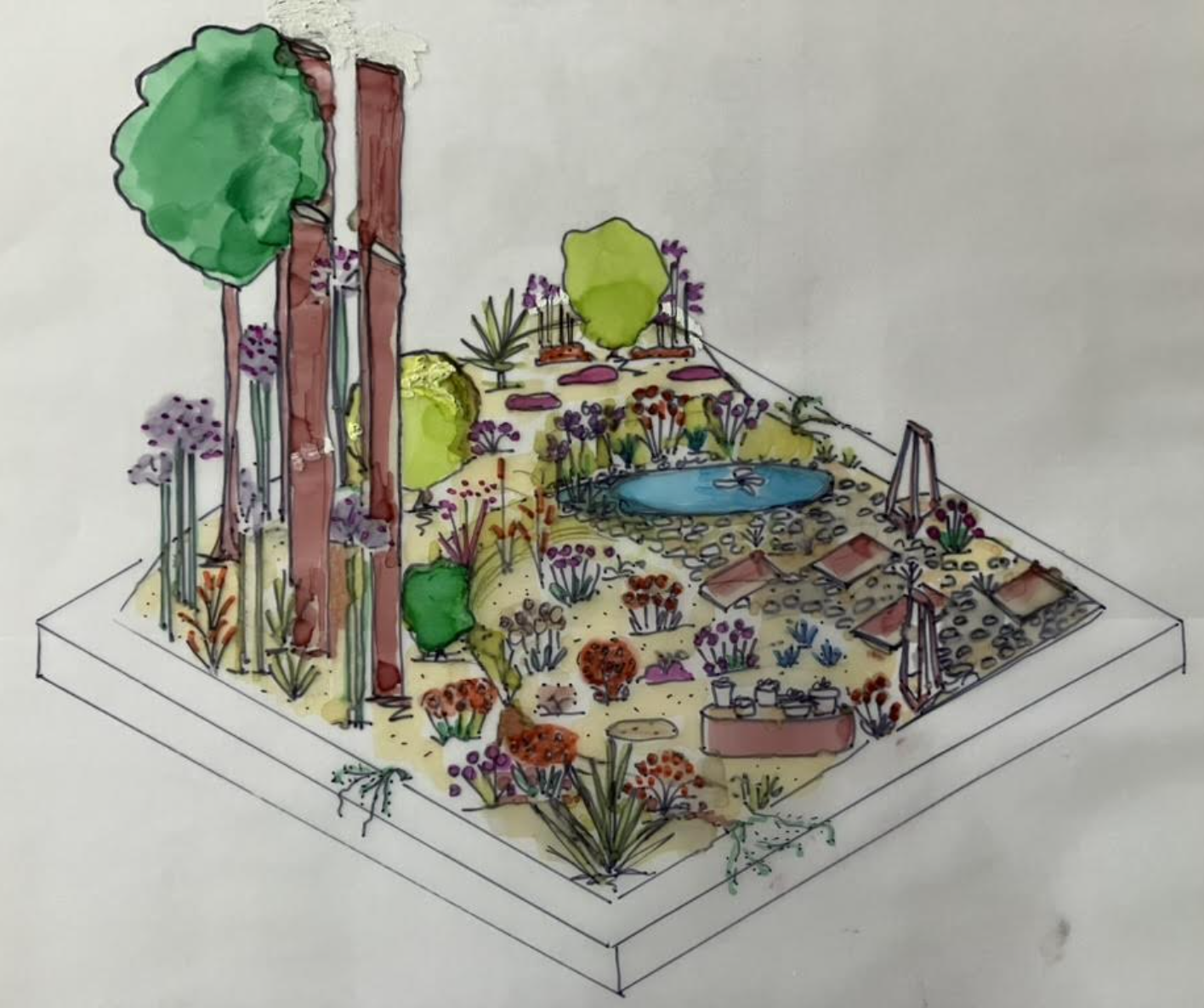
Rhoda Parry - Super blooms! A high-energy dry border for people, plants and pollinators
This vibrant border celebrates the beauty of sun-loving, dry-tolerant plants, including shrubs, herbaceous perennials, annuals, succulents, and grasses. Carefully selected to attract bees and butterflies, the plants thrive in an environment that supports local wildlife and encourages biodiversity. The border embraces innovative approaches to sand and gravel as both a planting medium and mulch, creating a sustainable and low-maintenance garden that thrives in dry conditions.
The undulating backdrop of the border draws inspiration from the East Sussex coastline, where the designer lives, as well as from the extensive sand beds at a naturalistic garden where she is a WRAGS trainee. This design also focuses on the way water can be harnessed and utilised effectively. By creating habitats that support flying insects, amphibians, and birdlife, the garden serves as a nurturing space for both plants and wildlife, offering a harmonious balance of beauty and ecological purpose
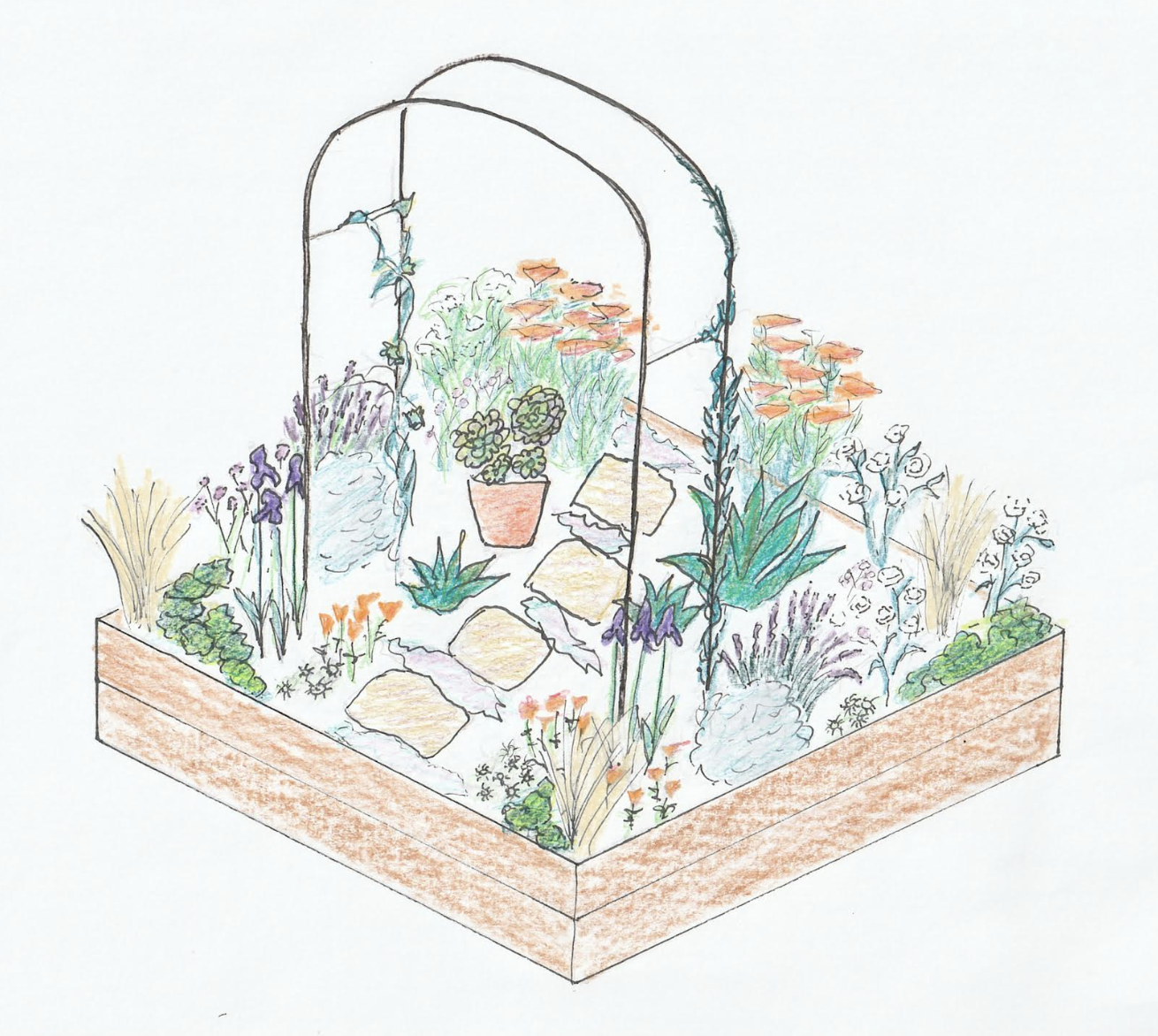
Victoria Benjamin - Putting Down Roots
The ‘Putting Down Roots’ garden brings the warm tones and sunny climate of Southern California, where I grew up, to the UK where I have lived for over 30 years.
The warm stepping stones are loosely set in gravel, for a casual, wild and contemporary feel, which, along with the terracotta pot with Aeoniums, reflect California courtyard aesthetics. The flower borders include drought-tolerant plants native to California and the colour scheme is replete with warm oranges and complementary purples and greens, reminiscent of the Desert Garden at the Huntington Botanical Gardens in San Marino, California – one of my favourite gardens.
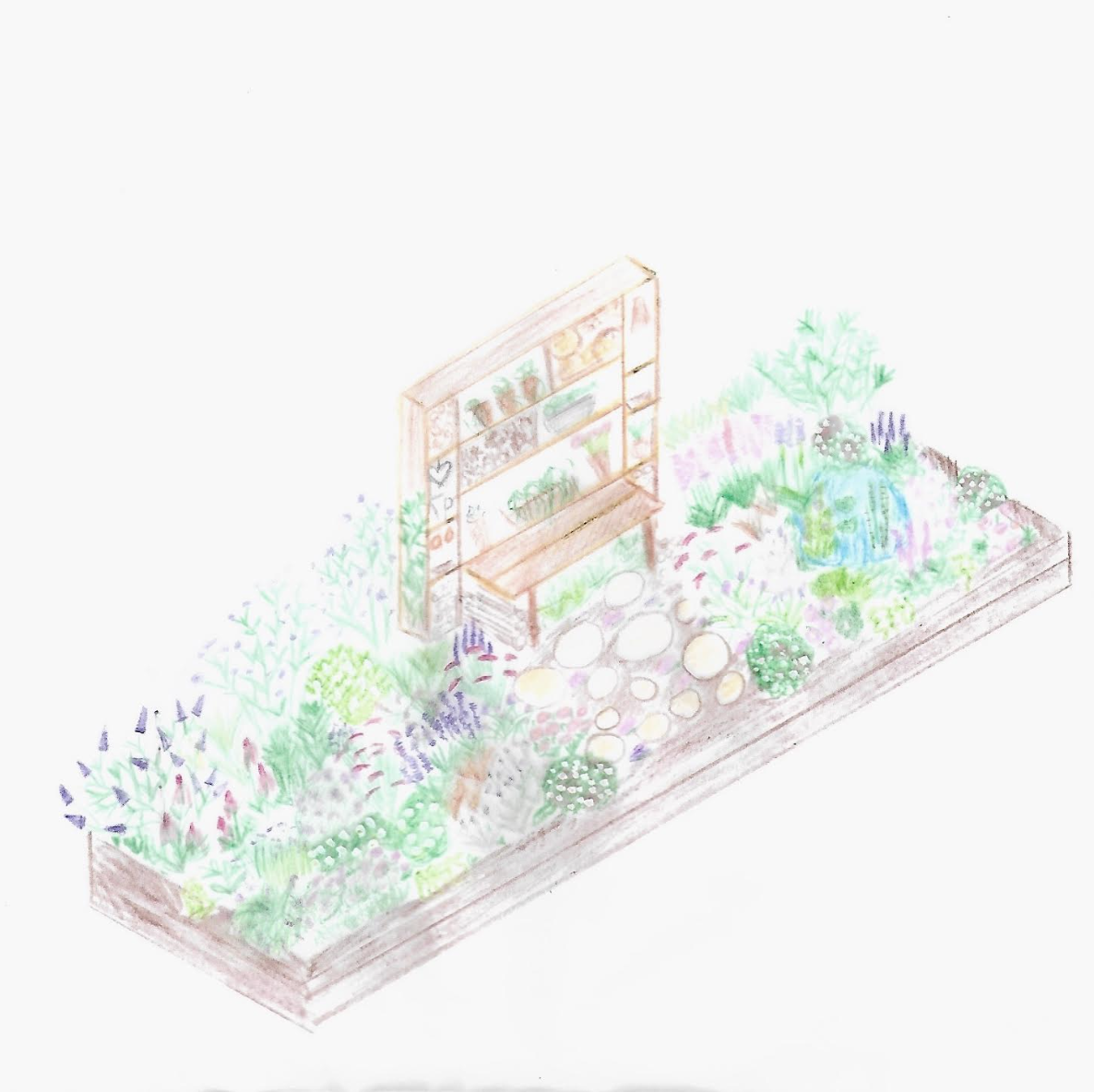
Sandrine Hughes - Connecting with nature: a sustainable haven for wildlife
Inspired by my own garden, I believe creating a wildlife-friendly space can be simple, rewarding, and sustainable.
As UK habitats shrink, gardens offer a chance to reconnect with nature and support biodiversity. Carefully curated plant choices, with a strong focus on hardy perennials, ensure the garden flourishes with minimal intervention while providing essential resources for pollinators throughout the seasons.
Alongside a variety of plants, the garden features habitats like bug hotels, log piles, and a small pond, offering shelter and nesting opportunities. I hope this garden inspires others to create their own wildlife-friendly havens and connect more deeply with nature.
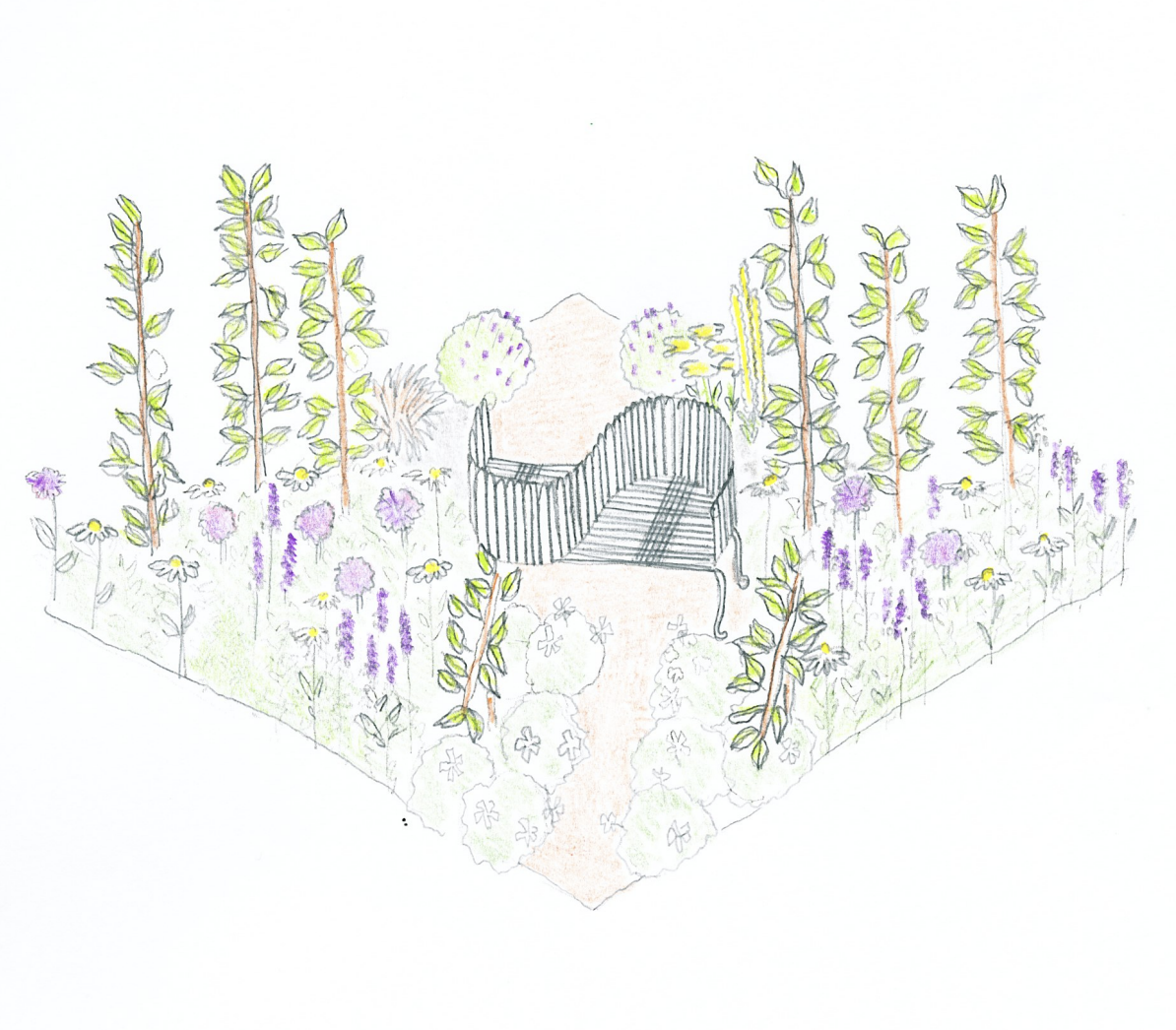
Isabel Sabine - Apple Core Values
My space explores how neighbours can create mini orchards in small gardens. By working together, a variety of cultivars can be planted for everyone to enjoy whilst still retaining each garden’s individual identity. Pollinators connect the gardens, enabling the different cultivars to blossom.
Human connections are created, from the initial planning – such as choosing the different cultivars for the gardens – through to the exchange of apple recipes and the sharing of a glass of homemade apple juice.
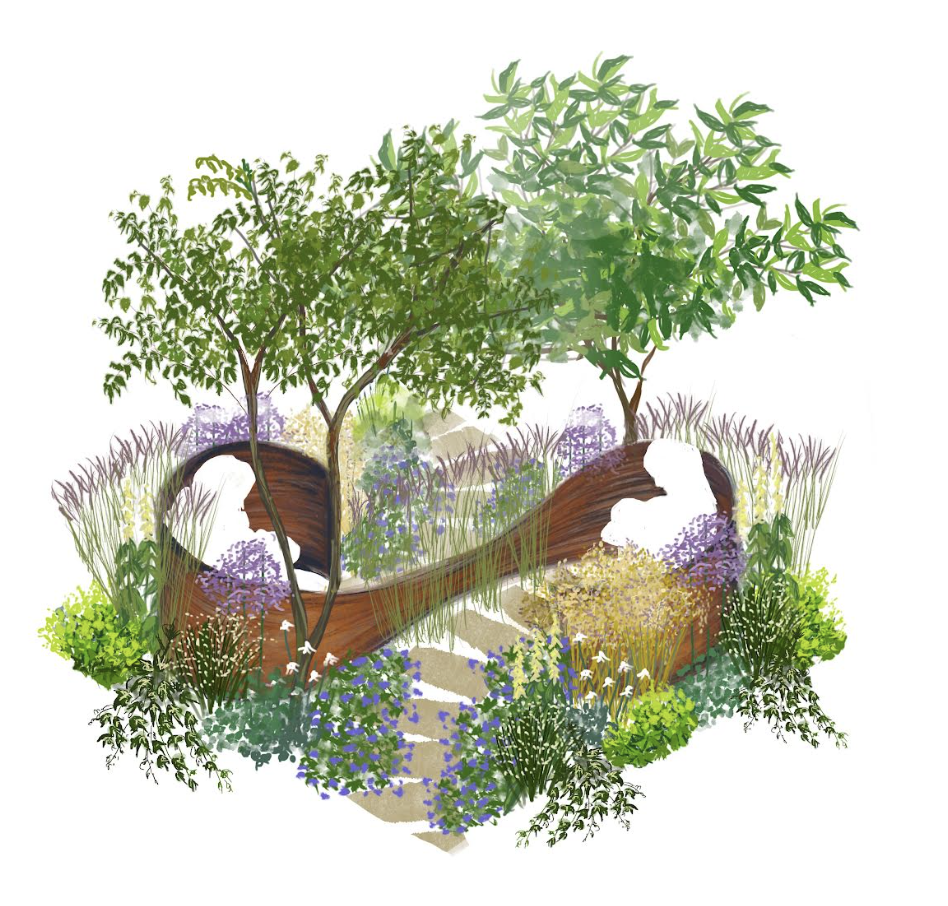
Jane Eastwood - The Newborn Garden
The newborn garden is a private space for carers to feed their young babies. Created in association with Maternal Mental Health Alliance and inspired by my experience of postnatal anxiety, the garden creates a sense of enclosure, shielding users from the outside world, but allowing them to connect with one another.
Shade is cast by a leafy upper tier which is underplanted with perennials in muted colours. Between the seats in the s-shaped bench, grasses are used to veil the occupants so they can see and interact with one another while retaining their privacy.
 My Basket
My Basket
